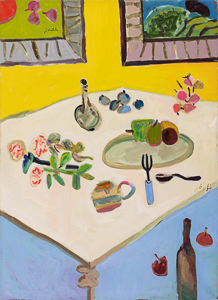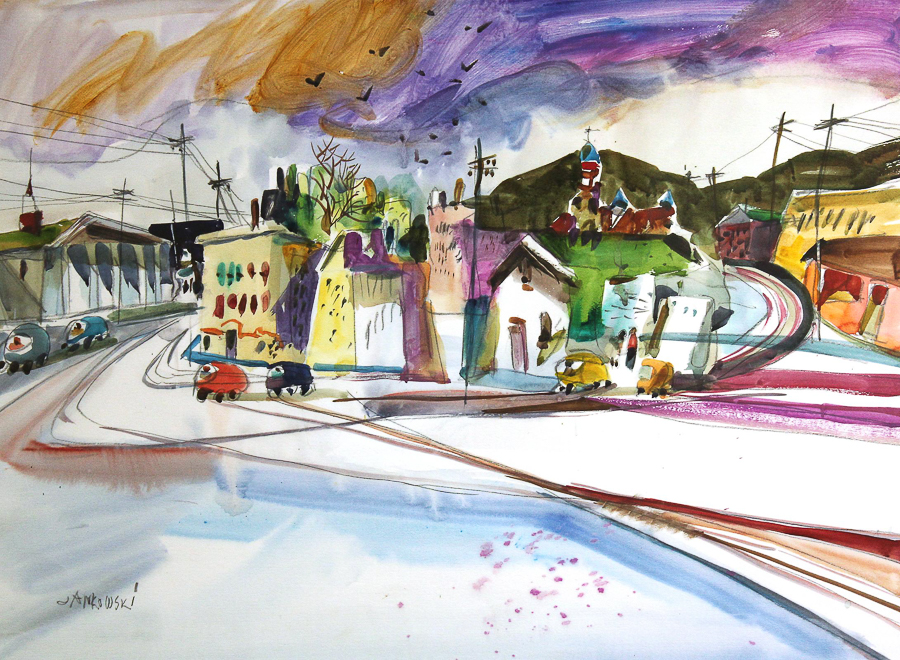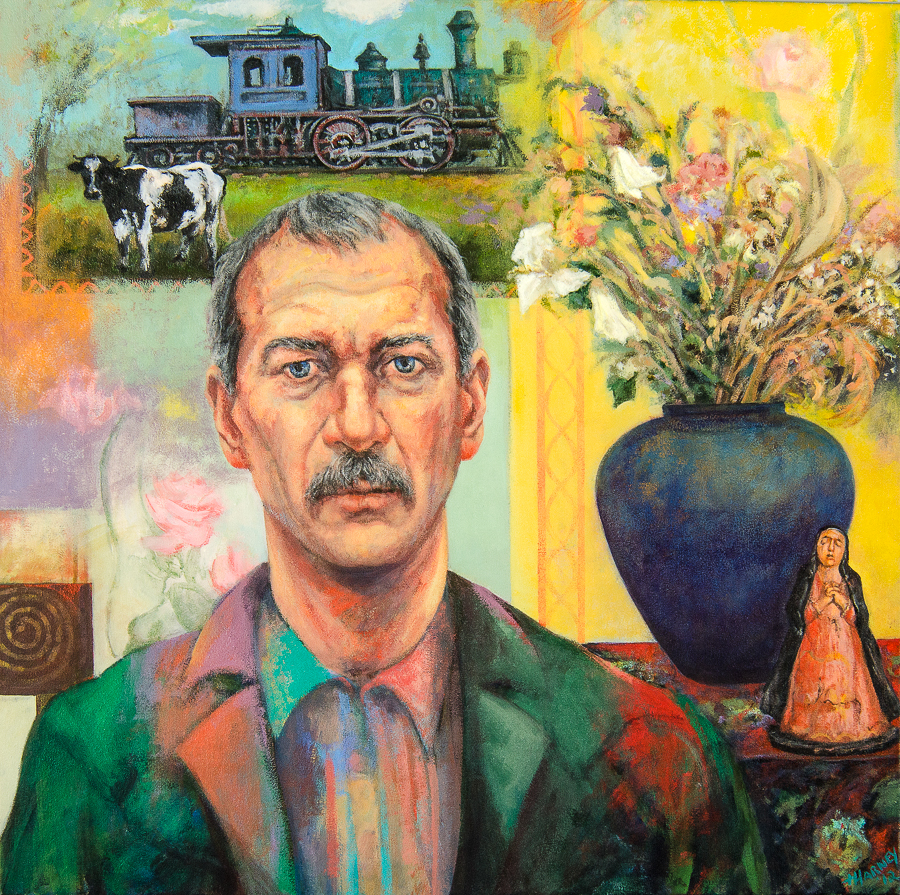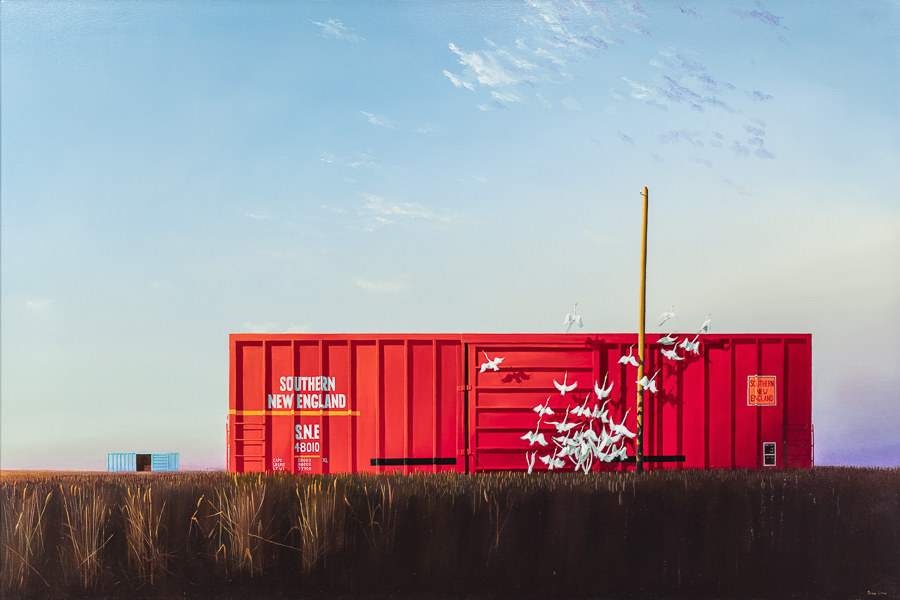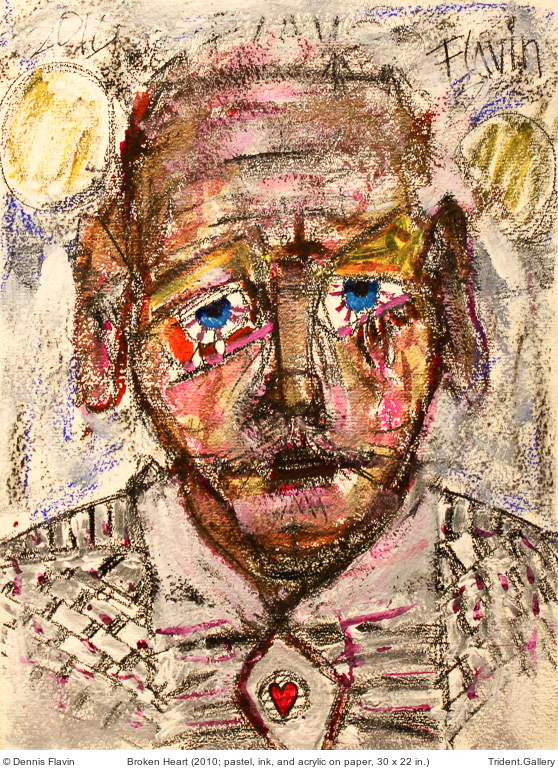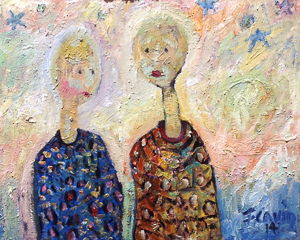Zygmund Jankowski
Zygmund Jankowski was a dedicated and innovative painter, a colorful and generous personality, and a loved and respected teacher. His paintings have been exhibited nationally and internationally, and he has become one of the most important artists of his time on Cape Ann, Massachusetts, influential both as a painter and as the colleague and teacher of a generation of artists.
He was born into a Catholic family in South Bend, Indiana, where he raised a family and earned a living as a commercial illustrator. He began to summer on Cape Ann in 1964 and by the late 1970s had moved permanently to Gloucester, where he devoted the rest of his life to his art.
During his career, Jankowski explored a variety of styles. In the mature work, he is best described as a colorist and expressionist who paints traditional subjects with exuberant irreverence for traditional colors, compositions, and perspectives.
He disparaged imitation and delighted in breaking the so-called rules of art — not in rebellion, but from a deep understanding that perceived their limitations. He cultivated an intuitive, uninhibited painting process which allowed him to transcend conventions without rejecting them. He worked in series, painting the same subject up to twenty times in a day. “I could do the same subject a thousand times,” he said. “Each time I try it, there’s something different in me that responds.”
He neither planned nor sketched his paintings, but romanced each one anew, often to music, dancing with it, lunging at it, stroking it. While painting, he said, “you stand as a referee between the scene, your emotions, and the [painting], juggling emotion and logic, intuition and analysis.” He said his brush was a musical instrument; or he called painting foreplay and a painting the child of an artist and his subject. “For Zyg,” says a friend, “art was life, and life was art.”
Having artistic talent, he said, entails an obligation to get to work, and the choice to be an artist was a serious responsibility to a journey of self-discovery, seeking the mystery within oneself as well as within the subject. “Stay up late and do some work,” he exhorted artists. “Grab at life! Work as if five hundred years wouldn’t be enough to do all you want to do.” With tireless commitment to his art, Jankowski expressed his playfulness and wit, his generosity of spirit, and his exuberance for life in the vivid and unexpected colors and compositions of his paintings.
In Jankowski’s thoughtfully spontaneous process, one can discern a happy marriage of Catholic mysticism and obligation with the principles of Zen calligraphy, in which a few unpremeditated brushstrokes embody years of devoted study and practice. “If I’ve lost some of my religion,” he said tellingly, “my art has become all that much more important.”
— Matthew Swift
